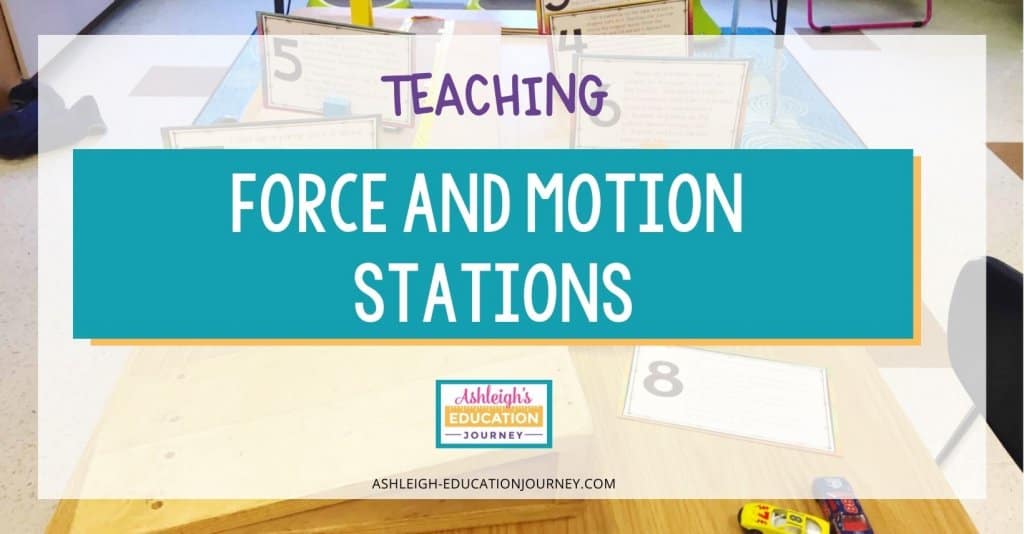
I recently posted Force and Motion Stations in my TpT store. You an use these as centers or stations, or as individual force and motion worksheets. In the activity, I tried my best to give clear directions, but sometimes a picture is worth a thousand words. I want to share ideas from the stations with you, so that even if you don’t use the printables, you can get some ideas for hands-on activities to teach force and motion.
I’ll be the first to acknowledge that these force and motion worksheets and stations require some prep and materials, but they’re worth it. Plus, the materials can be used again and again with physical science lessons. I started by collecting everything I needed and setting up anything that required assembly. When my students walked in the classroom, they were SO EXCITED for the science lesson that day!

Force and Motion Stations
Station 1: Friction
In the first station, students experiment with the effect friction has on toy cars. I built a ramp out of thin plywood. On the ramp, I have a piece of felt and a piece of sand paper. Students roll the car down the ramp on the smooth surface and record how far the car rolled from the ramp. Then, they repeat the steps rolling the car down the felt and then down the sand paper.


Station 2: Pendulum
In the second station, students experiment with a pendulum. This is a station where I benefited from going ahead and setting everything up for students. I taped three rulers to the tops of desks. Then I cut yarn in three different lengths and taped each piece of yarn to the center of a different ruler. I tied a plastic jar to the end of each piece of yarn. In the station, students take a jar and lift it to the height of the ruler and let it go. They time how long each jar swings back and forth, so they can compare the movement of different lengths of string.

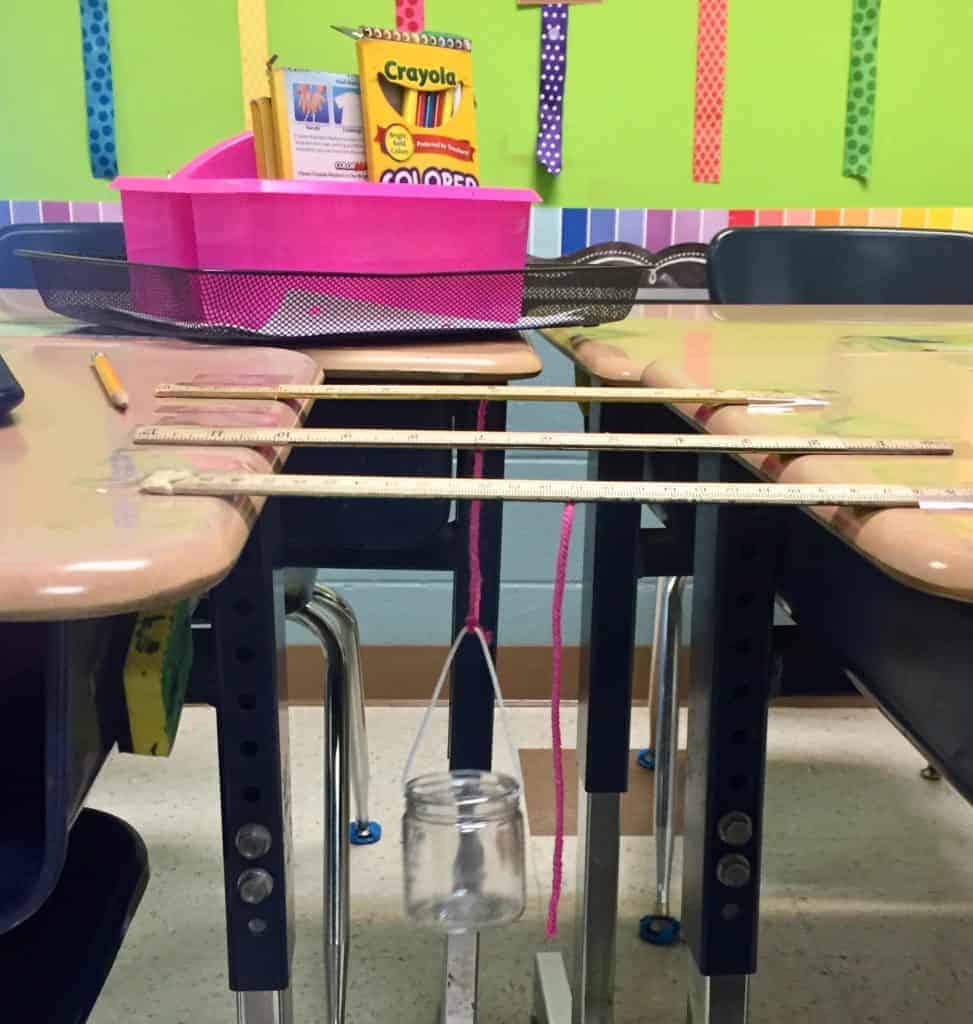
Station 3: Launching
Station three calls for a launcher, which in my mind is just a huge tweezer. Students use the launcher to launch a pom pom, and they learn that the further they press down the top of the launcher, the farther the pom pom will travel.
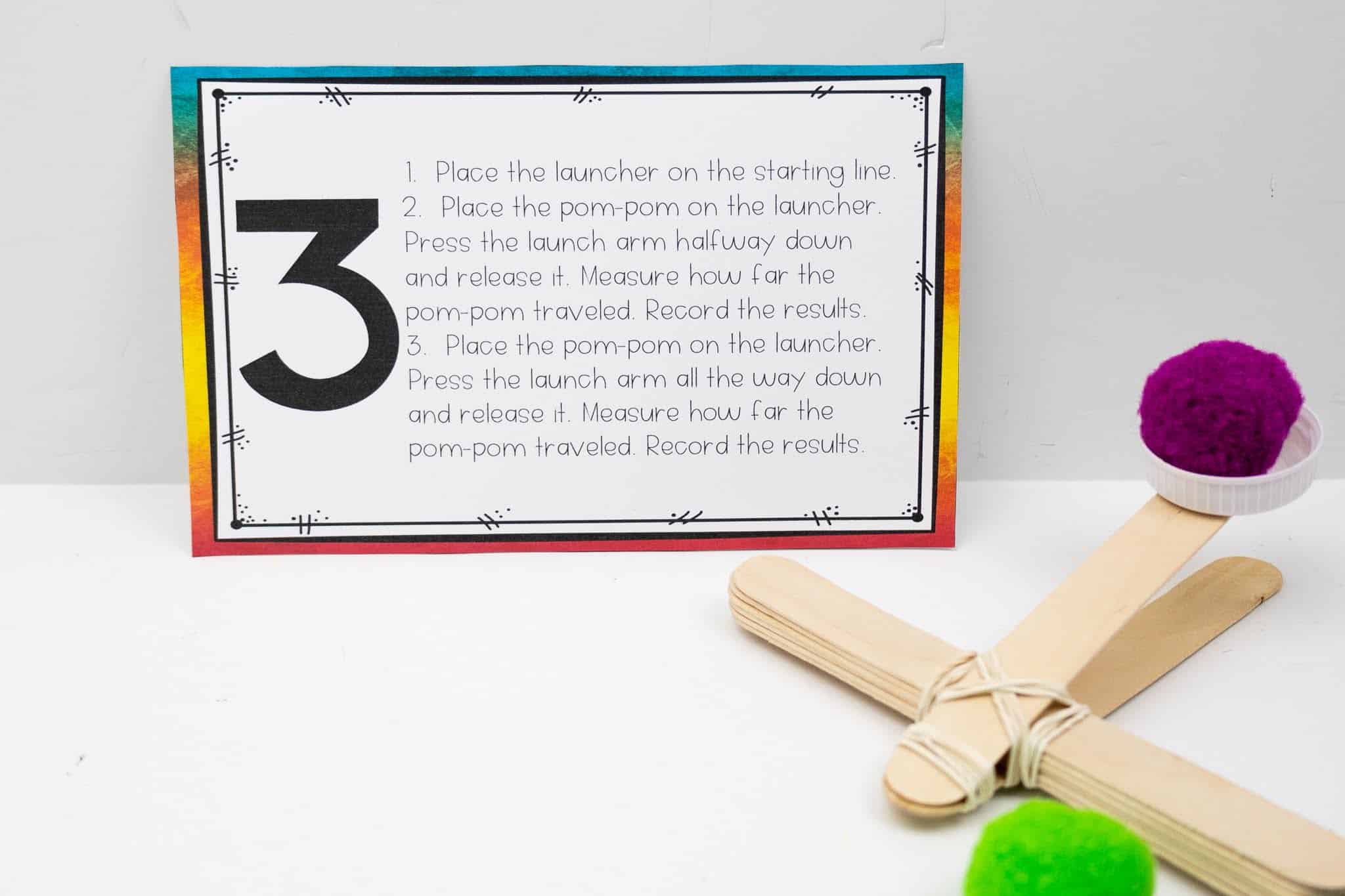
Station 4: Magnetic Force
Station four is fairly simple, but it allows students to discuss magnetic force. They measure how far away a paperclip can be from a strong magnet until they can feel the magnetic force. Then students place a piece of cardboard between the magnet and paperclip and determine how far away the magnet can be away from the paperclip until they feel the magnetic force.

Station 5: Bouncing
Students love station five! In this station, students hold a bouncy ball 20 cm above the ground. They drop the ball and see how high the ball bounces. Students repeat these steps holding the ball 50 cm above the ground and 80 cm above the ground. I was pleasantly surprised that all groups bounced the ball appropriately.

Station 6: Balloons
Station 6 was definitely the favorite! students blew up balloons about a fourth of the way full and released the balloon. Then students measure how far the balloon traveled. Students repeat this blowing up the balloon half way and again blowing up the balloon all the way. I ended up saving this station for last and having students complete this activity outside, because the balloons traveled a long way, and it did get fairly noisy.

Station 7: Mass and Distance
I had to improvise a bit in station seven. I needed a ping pong ball, tennis ball, and golf ball. However, we made it work with a tennis ball, whiffle ball, and baseball. As long as students can see the difference of the distance balls with different masses travel, the activity will work.

Station 8: Gravity at Work
In station eight, students place a toy car at various positions on a ramp and determine how far the car traveled in relation to where the car was placed on the ramp. This activity allows students to see gravity at work.

Station 9: Newton’s Second Law
In station nine, students experience with Newton’s second law by allowing two cars to collide in various positions to see the reaction of the two forces.
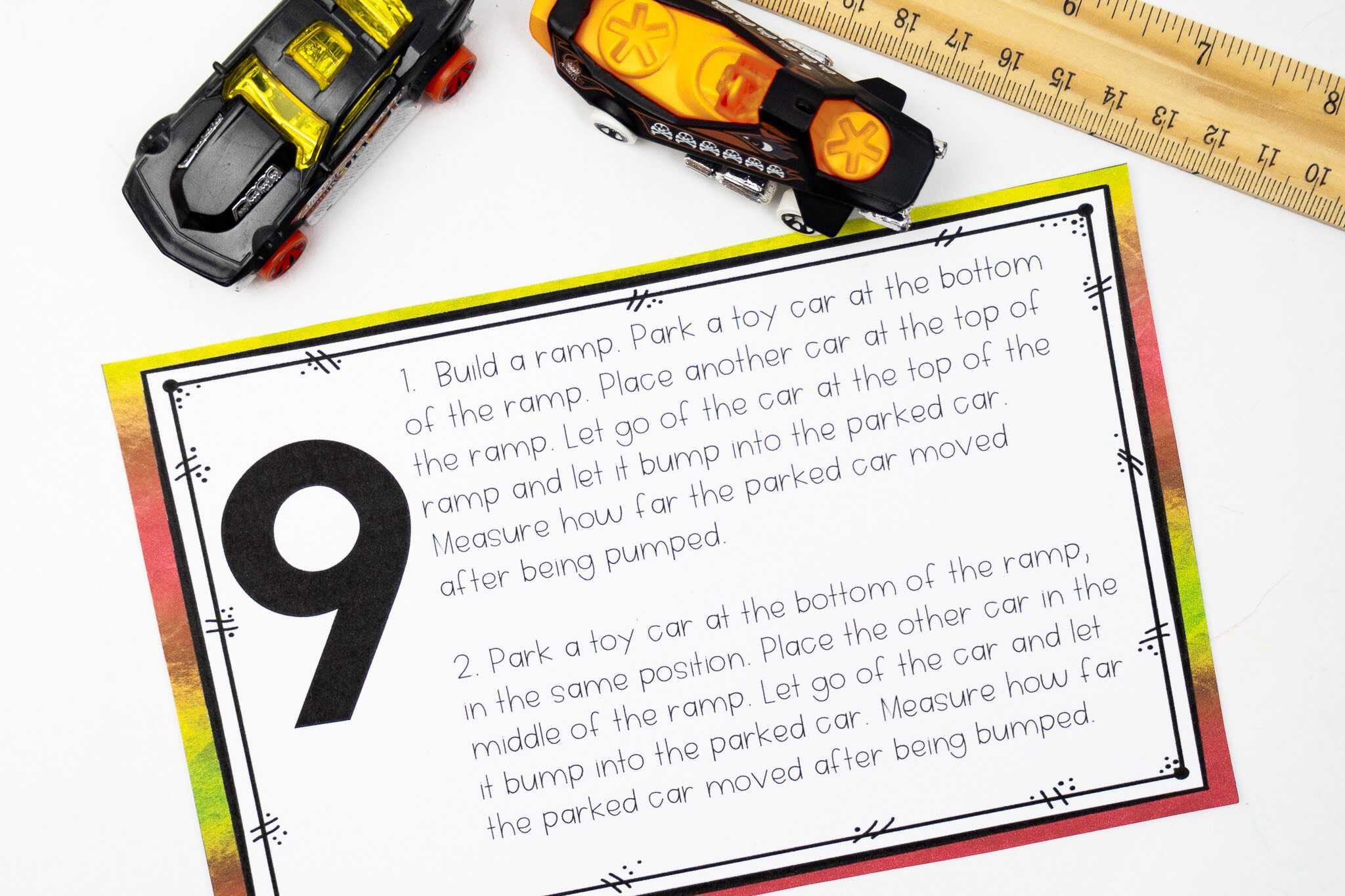
I had my students record all of their information on the force and motion worksheet below. It took us two 30 minute class periods to complete the stations, so I think this is definitely an hour to hour and a half activity.

Let me know if you have any questions or if you have any other great ideas for force and motion labs! You can use this post to learn how I use these stations as part of my science instruction.

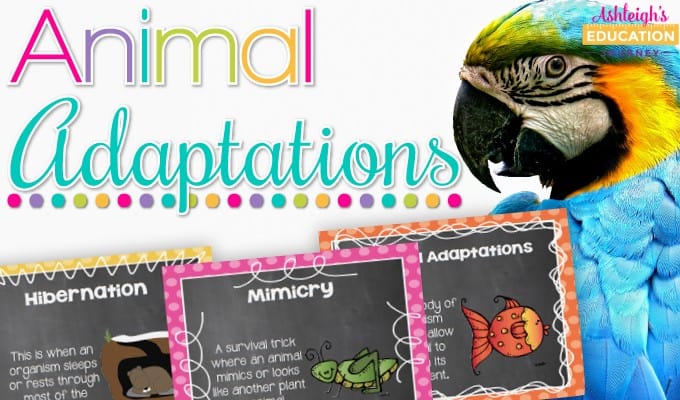
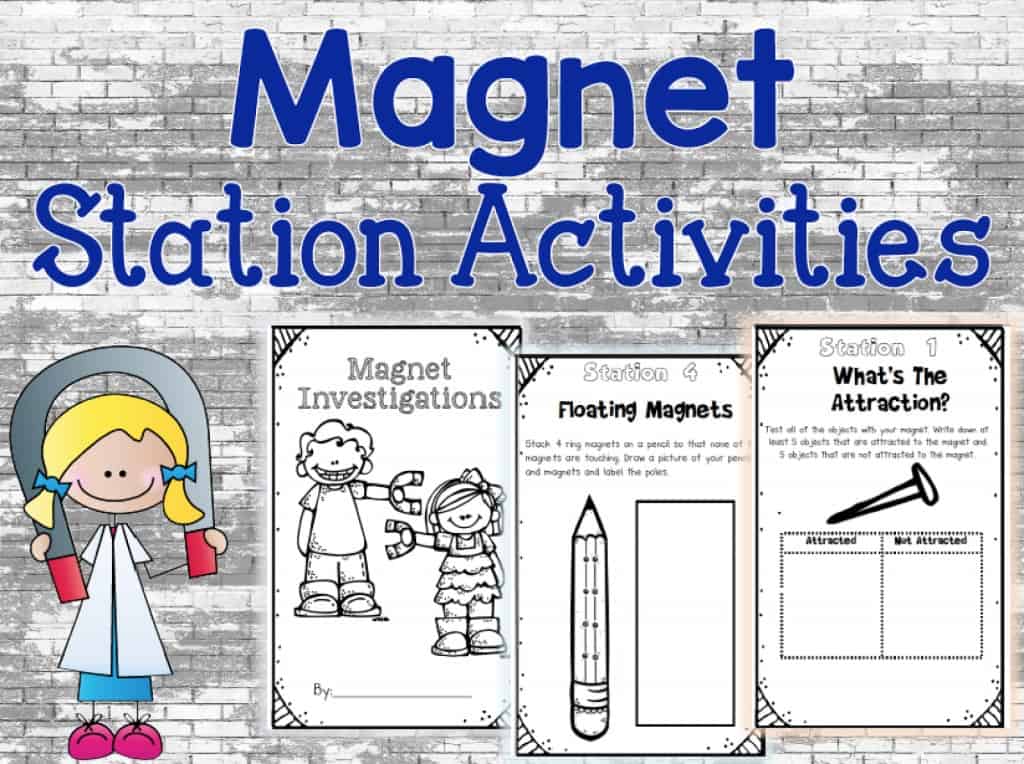
I’m excited to come across a blog post that is about science!!!! (enough said!)
Hi, Ashleigh! As always, this looks amazing! I was wondering if you had a timeframe for your Simple Machines Stations? I will be starting that unit next month, so just trying to think ahead! Thanks for all you do to help teachers and students alike!
I have them, but I haven’t posted them yet or actually used them. I’m always afraid to post anything I haven’t tested. If you want, I can email them to you.
If you don’t mind, I’d be happy to be a guinea pig for them! I can also pay for them – either by purchasing something from your TpT store, or transferring money via PayPal or something. Just let me know! My email is camac47@gmail.com! Thank you!
Are your simple machines stations posted as well. I was looking for them and did not see them in TPT. I would love to try them.
No, I shared them as a freebie in a Facebook group, but I don’t have them for sale anywhere. Let me see if I can find them.
that would be wonderful. Thank you so much! Let me know if you find them, i will even pay you for them.
How do you attach the string and the jar? I purchased this and I’m planning on using it next week!
These are really cool station ideas for teaching forces and motion. I’m a third grade teacher, and our district uses the FOSS curriculum, but I’m always looking for some supplemental STEM-type activities to incorporate. Would you have any suggestions for incorporating something like this within a kit-based science curriculum?
I’m afraid I don’t know much about a kit-based science curriculum. I’ve always wanted to see FOSS curriculum, but it’s too expensive for me to purchase on my own.
I would love to try these stations! Where did you get the launcher you used in #3? I can’t find anything like that anywhere.
I believe I got it from Lakeshore Learning.
Hi There!
I purchased this from TPT and am excited to have my kids go through these stations. I am confused by the first station. On the card it says you place a piece of felt (and then a piece of sandpaper) at the BOTTOM of the ramp, but the pictures show that the felt and sandpaper are actually ON the ramp. Is the card typed up wrong?
Pingback: 40 Fantastic Fourth Grade Science Experiments and Activities – Usae
Pingback: 35 Impressive 4th Grade Science Experiments and Activities - US Clock News
Pingback: 40 Fantastic Fourth Grade Science Experiments and Activities – I-Capitals
Pingback: 40 Fantastic Fourth Grade Science Experiments and Activities | atmhaber.com
Pingback: 40 Exciting Hands-On Fourth Grade Science Experiments, Activities, and Projects - Edulogg
Pingback: 50 Fantastic Fourth Grade Science Experiments and Activities - Perfect Hok
Pingback: 50 Fantastic Fourth Grade Science Experiments and Activities - Apkmcn
Pingback: 50 Fantastic Fourth Grade Science Experiments and Activities | News magazine
Pingback: 50 Impressive Fourth Grade Science Experiments and Activities - Newslng
Pingback: 50 Fantastic Fourth Grade Science Experiments and Activities - Tricks Made
Pingback: 50 Fantastic Fourth Grade Science Experiments and Activities - 4u Created
Pingback: 50 Impressive Fourth Grade Science Experiments and Activities - Emirates Education Platform
Pingback: 50 Improbable Fourth Grade Science Experiments and Actions | Better Tomorrow
Pingback: 50 Fantastic Fourth Grade Science Experiments and Activities – Consumers Advisory
Pingback: 50 Exciting Hands-On Fourth Grade Science Experiments, Activities, and Projects – Heroes News Network
Pingback: 50 Implausible Fourth Grade Science Experiments and Actions | Smart Online Life
I’m sooooooooooooooo Happy.